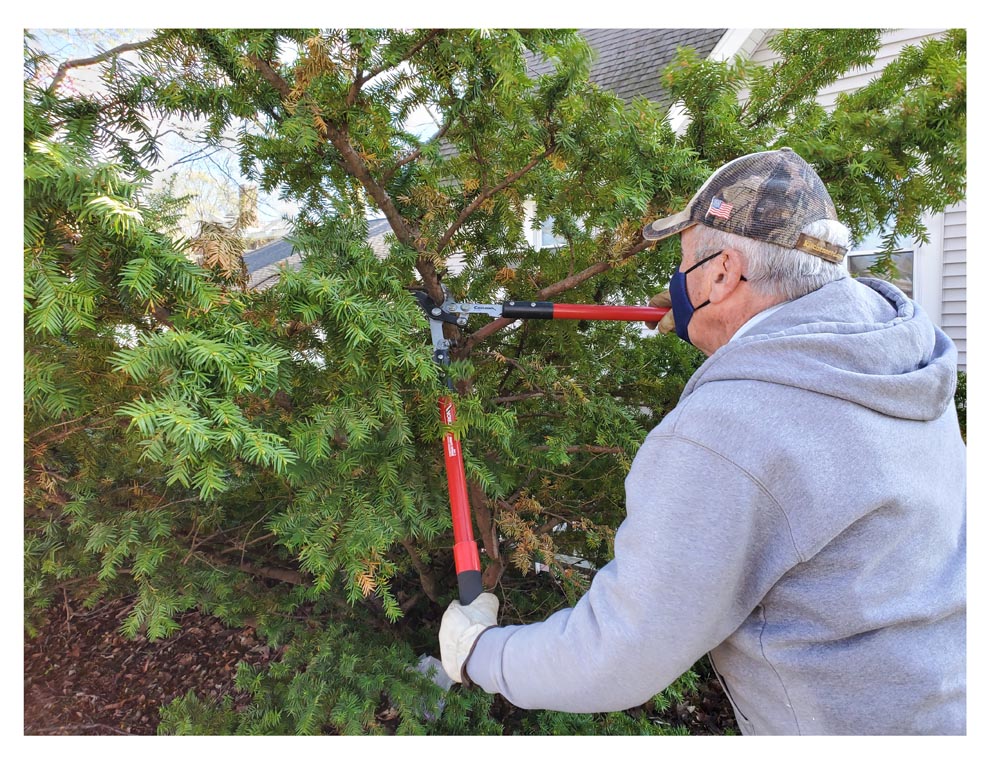
By Sarah Vogel
Throughout the growing season, gardeners and arborists talk about the benefits of pruning woody ornamentals while they are dormant, and that time is almost here.
“Pruning can seem like a daunting task, but it is an important cultural practice for the health and vigor of many trees and shrubs,” said University of Illinois Extension horticulture educator Sarah Vogel.
Pruning is done to reduce the size and shape of the plant, increase flower or fruit production, and promote sound structure.
The correct time to prune deciduous shrubs and trees is determined by the plant’s growth habit, bloom time, and health, or condition. Timing will depend on the species, but any time is a good time to remove dead, dying, or broken branches. Be sure to sanitize tools between plants with a 10% bleach solution or undiluted 70% isopropyl alcohol. Sanitize between each cut if a disease is suspected.
Spring flowering shrubs, such as lilac or forsythia, will bloom on the growth from the previous growing season, sometimes called “old wood”. The best time to prune a healthy plant is immediately after flowering in Spring. Overgrown shrubs may need more extensive pruning through rejuvenation, or renewal methods in late Winter, or early Spring. Heavy pruning methods may lead to fewer blooms for a few years, but will improve the overall health of the shrub.
Summer blooming shrubs, or those that bloom after July 1, produce blooms on the current year’s growth. These are best pruned in late Winter, or early Spring.
“Do not prune deciduous shrubs in late Summer because that will encourage a flush of new growth that will not have the opportunity to harden before Winter, leave the plant susceptible to frost damage and dieback,” Vogel said.
Many of the same rules for shrubs apply to deciduous trees. Most will respond well to late Winter pruning, including fruit trees. Performing this task on trees in the dormant season gives the pruner an increased visibility of the tree’s shape without any leaves and enough time for proper wound closure for the plant. When branches are cut correctly at a node or at the branch collar, the plant will seal wounds properly to prevent the spread of decay and entry for potential pests and pathogens.
There are some exceptions to early Spring pruning. To reduce the spread of oak wilt disease, oaks should not be pruned from March through October. River birch will respond best to cuts made in late Fall or early Winter after leaves have fallen and when sap flow is reduced.
Pruning techniques on evergreens will vary depending on the species and desired effect. Fall pruning is not recommended for evergreens, as any new growth will be susceptible to Winter injury. Evergreen shrubs such as juniper and yew can be pruned in March or April before new growth emerges. Evergreen trees such as pine, spruce, and fir, generally require very little pruning, and removing lower branches is not advisable because it compromises the structural integrity of the tree.
Spruce and fir trees have lateral buds on the newest growth. These are buds that grow from the sides of the branch, not the ends. To create a more dense form, prune back to these lateral buds in early Spring. Pines only grow from terminal buds at the end of the branch. Pines are prunes and pruned in Spring or early Summer at the candle stage by removing two-thirds of the elongated bud.
Sarah Vogel is a horticulture educator, at the University of Illinois Extension.
—University of Illinois Extension

